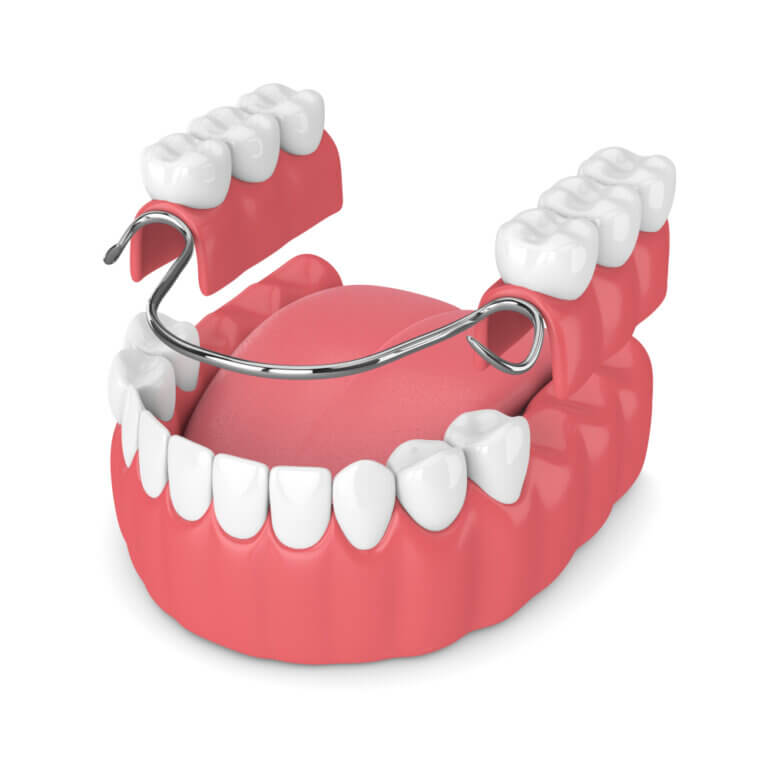When it comes to replacing missing teeth, a permanent or a removable dental bridge offer an effective and aesthetically pleasing solution.
However, while a removable dental bridges can restore your smile and improve your oral function, they do come with their own set of unique difficulties.
From maintenance and cleaning routines to potential discomfort and adjustments, we’ll explore some obstacles that may arise and provide valuable insights to help you navigate the journey of living with a removable dental bridge.
Why Did I Get A Cavity Under My Bridge?
The idea for this column came to me when I saw a patient this past week who presented himself in the office with this issue.
I have written about permanent bridges that patients have used well and appreciate their cosmetic and functional benefits for many years.
For some patients, they experience good results for a decade or two. Receding gums followed by root exposure and aging of dental glue contribute to the necessity of replacing or updating a permanent dental bridge during the patient’s life.
The Pros and Cons of a Removable Dental Bridge
Today we will not go in that vein and will move to a removable bridge.
We use a removable bridge for a variety of reasons. Some uses include replacing many teeth at once, affordability, weak supporting teeth, and many more. The downside of a removable bridge is that it is not permanent, but as with everything in life, there are pros and cons to every decision and choice we make.
How a Removeable Dental Bridge Stays Put
Because we are not using permanent glue to affix the removable bridge in the mouth, the bridge must anchor to the remaining teeth. Dentistry has devised many ways to attach and many types of attachments with which to latch onto a tooth. Flexible tooth-colored material or metal arms that surround and hug the tooth are common. The anchor tooth is used as a brace, and the attachment design should not unintentionally stress the tooth to shorten its life span.
However, the arms that embrace the tooth can lead to a problem, an example I saw this week in our patient.
Whenever a dentist does a filling or a crown in the mouth, the goal is to create as smooth a surface as possible. As I slide an instrument from the filling to the tooth, I close my eyes and concentrate on feeling alone. The transition must be smooth and not have any catches.
A Rough Surface and Improper Cleaning = Decay
Roughness and bumps, whether in our dental fixes or even on a natural tooth, become areas where food and bacteria can collect. These areas take extra time and care to clean and remove anything attached to those areas. Many people struggle with this level of care and leave damaging agents on their teeth.
The arms of the bridge surround our teeth and create areas where food will collect. When we eat, food sticks to these areas; unless we remove the bridge and clean it well, the food sits all day long. For many people, this is not practical. After years of food sticking, the result is decay in the tooth. My patient this week had such severe decay that he needed a root canal procedure to save his anchor tooth. He only had two anchor teeth, and losing one would have required me to make a new bridge.
A Preventative Approach
I mentioned that obsessive cleanliness is one approach to preventing this problem from developing. Most people find this a difficult task. The alternative approach is preventative when the bridge is made. Research and years of observational data show that preceding the bridge with a crown on the anchor teeth protects those teeth in the ensuing years. The bridge fits better and lasts longer than simply latching onto teeth without any preparation.
Schedule an Evaluation
If you have a bridge that comes in and out and has serviced you well for years, maybe it is time to look at the anchor teeth and take measures to protect them so that you can continue to wear your bridge without having to make major changes to your mouth.
All you need is a checkup and an evaluation to create a plan for the long term. Please call Nikki at 440.951.7856 as I look forward to meeting you.
Jeffrey Gross, DDS, FAGD is an Ohio licensed general dentist and is on the staff of Case Western Reserve School of Dental Medicine.

